I’ve been thinking a lot lately about ways to both simplify household tasks and live more sustainably. I love to have plants around the house, so making a passive watering system seemed like a great opportunity to attempt to achieve both goals. Since I don’t have a balcony or garden, I focused on plants that I could grow indoors. I also wanted to grow edible plants because eating locally grown food is a great step towards sustainability. What is more local than something that you grow at home?
A passive watering system reduces the amount of time you have to spend watering your plants drastically. This is great for me, since I don’t have much time to devote to plant maintenance due to the fact that I am busy both working in industry and finishing my PhD on the side. Watering plants on time can be particularly problematic, especially if I need to go out of town.
While there are self-watering plant pots on the market, I didn’t want to invest in a whole new set of pots. After researching some DIY methods, I decided on a passive watering system that uses a wick to draw water into the soil from below. This method allowed me to use up some materials that I already had, and repurpose things that would normally be thrown in the trash. I won’t go into too much detail about how I made it since there are plenty of great tutorials online… and their final product is often prettier than mine. My focus here is on how to implement this by up-cycling things I’d normally throw away or recycle.
Materials
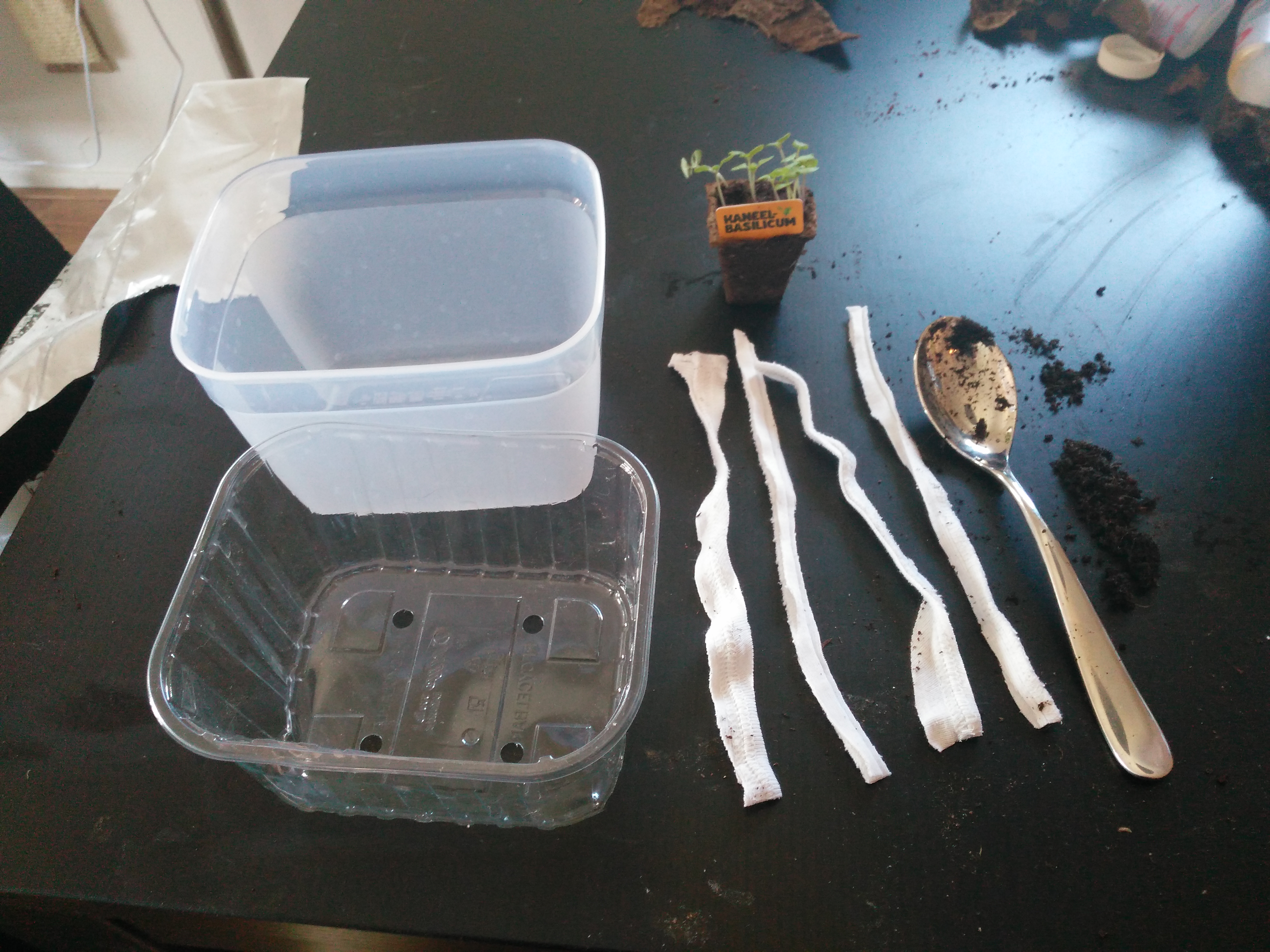
The only thing that I had to buy for this project was potting soil. I had everything else that I needed already, including the seeds. Every year one the the grocery stores in the Netherlands has a promotion where they give away seed kits to grow your own (mostly edible) plants. So I used these kits to grow some seedlings (in this case I am planting Cinnamon Basil).
The inner container that I’m using is an old strawberry container. Old produce containers are excellent for this purpose since they already have holes through which a wick can be threaded. As an outer container I used a plastic food storage container, since the inner container fit perfectly into it.
As a wick I cut strips from a worn-out old cotton t-shirt. Cotton absorbs liquid very well, so it is an excellent wick. This is a great way to give a new purpose to clothes that are too old to wear.
How to make it
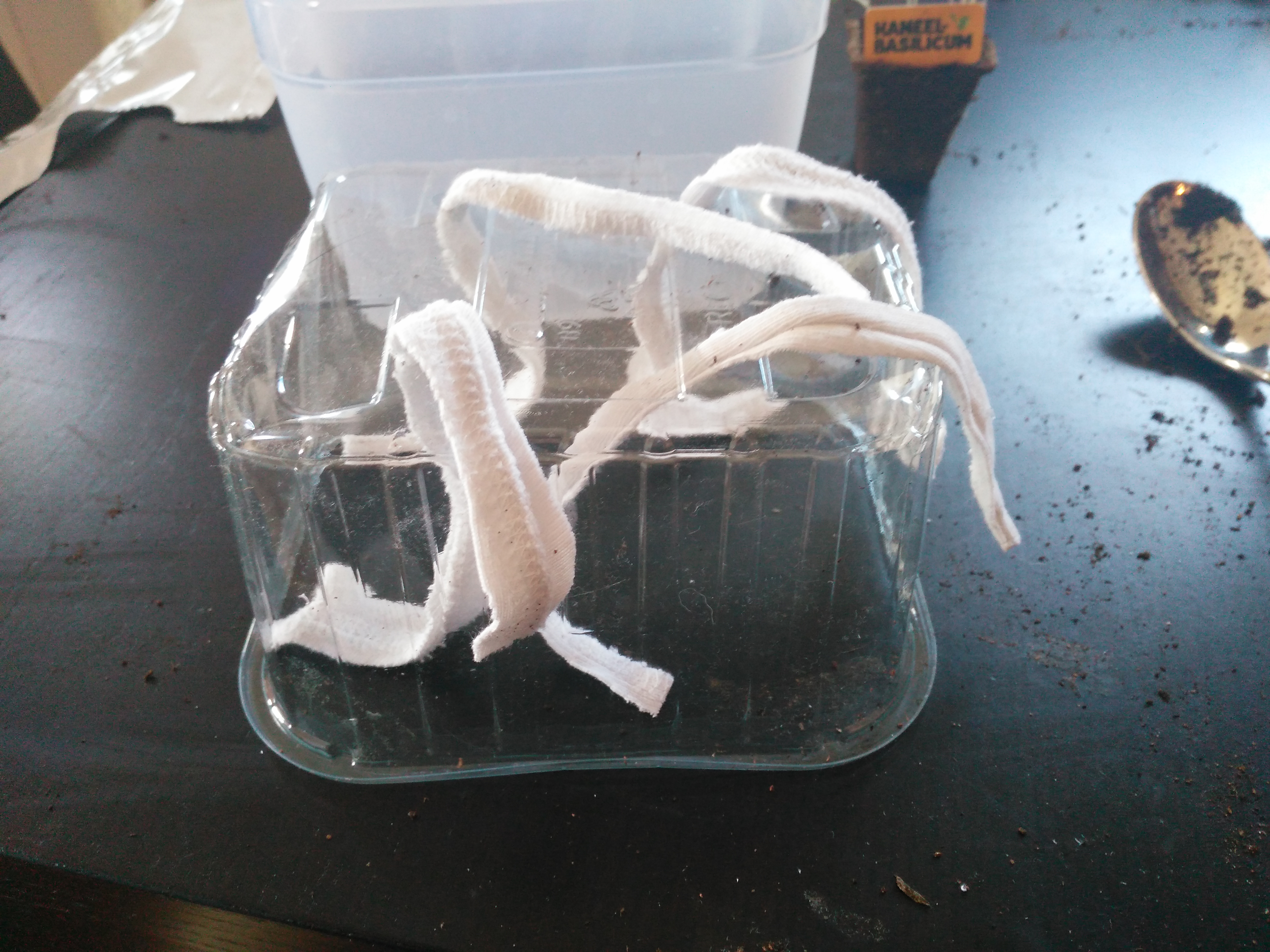
The first step was to thread the cotton strips through the holes in the inner container.
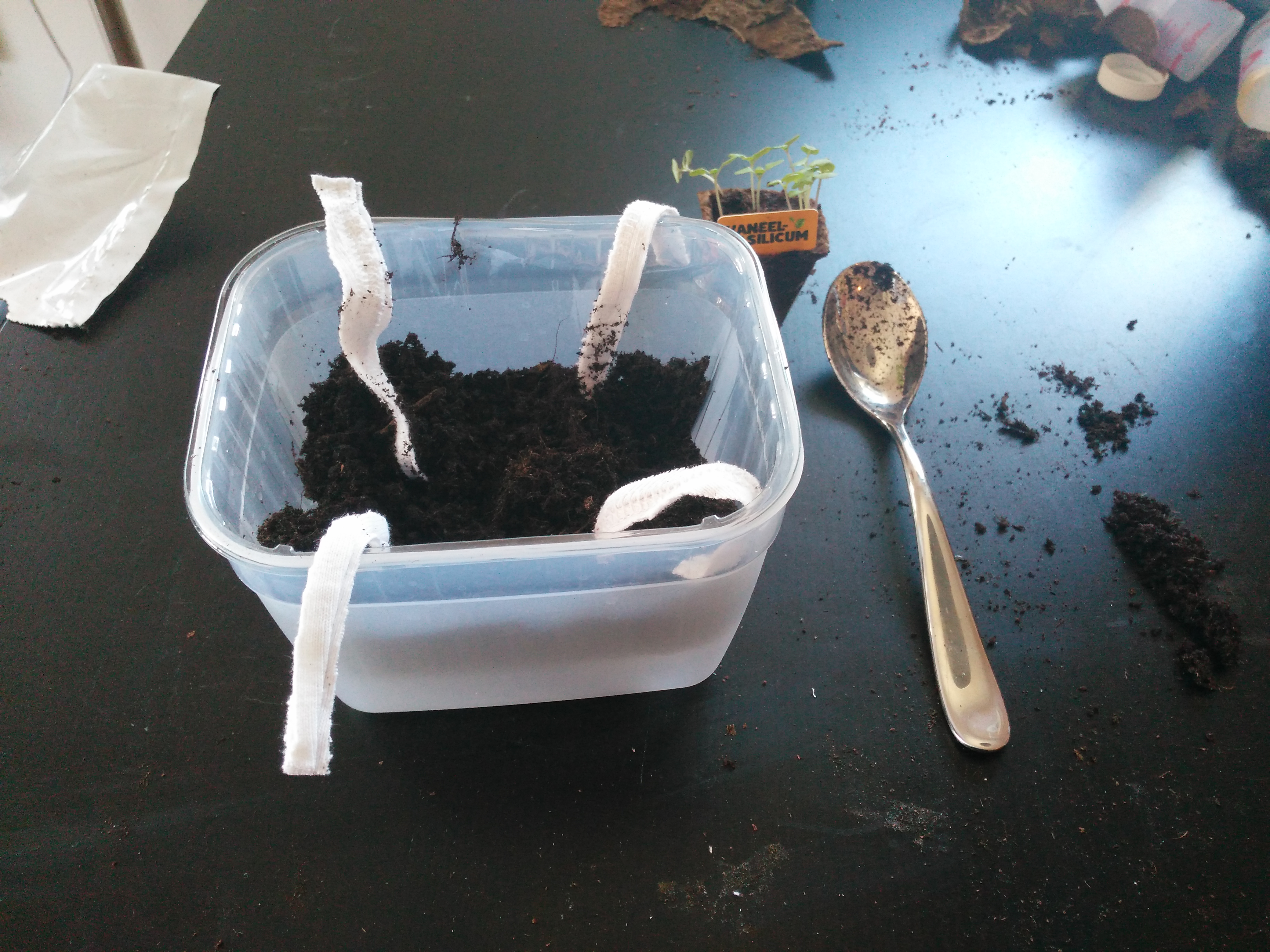
I then filled the inner container with potting soil, with the wicks passing up through the soil. Once the container was full I pulled the wicks from the bottom until they no longer stuck out of the top of the soil.
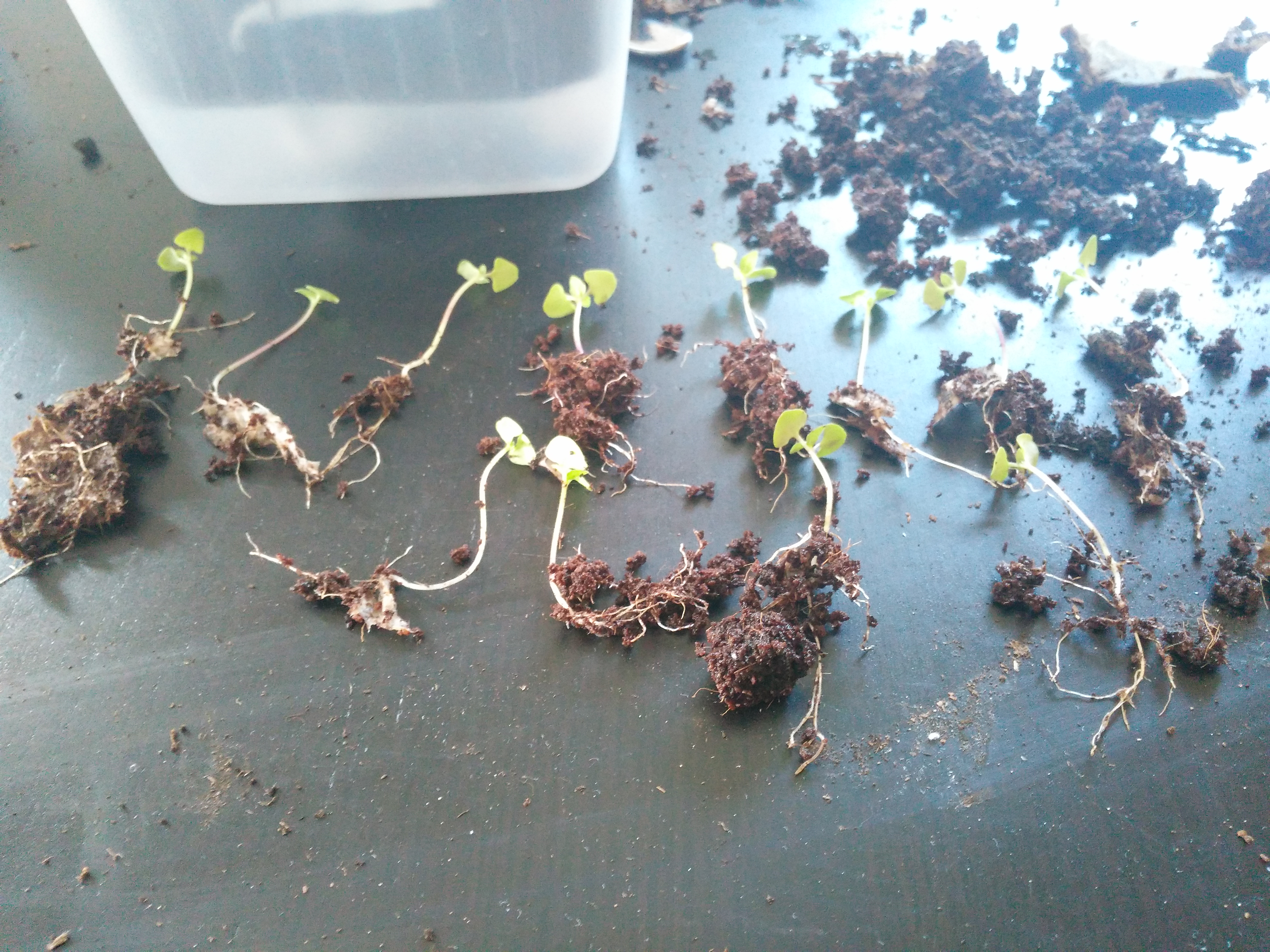
I separated my seedlings from each other.
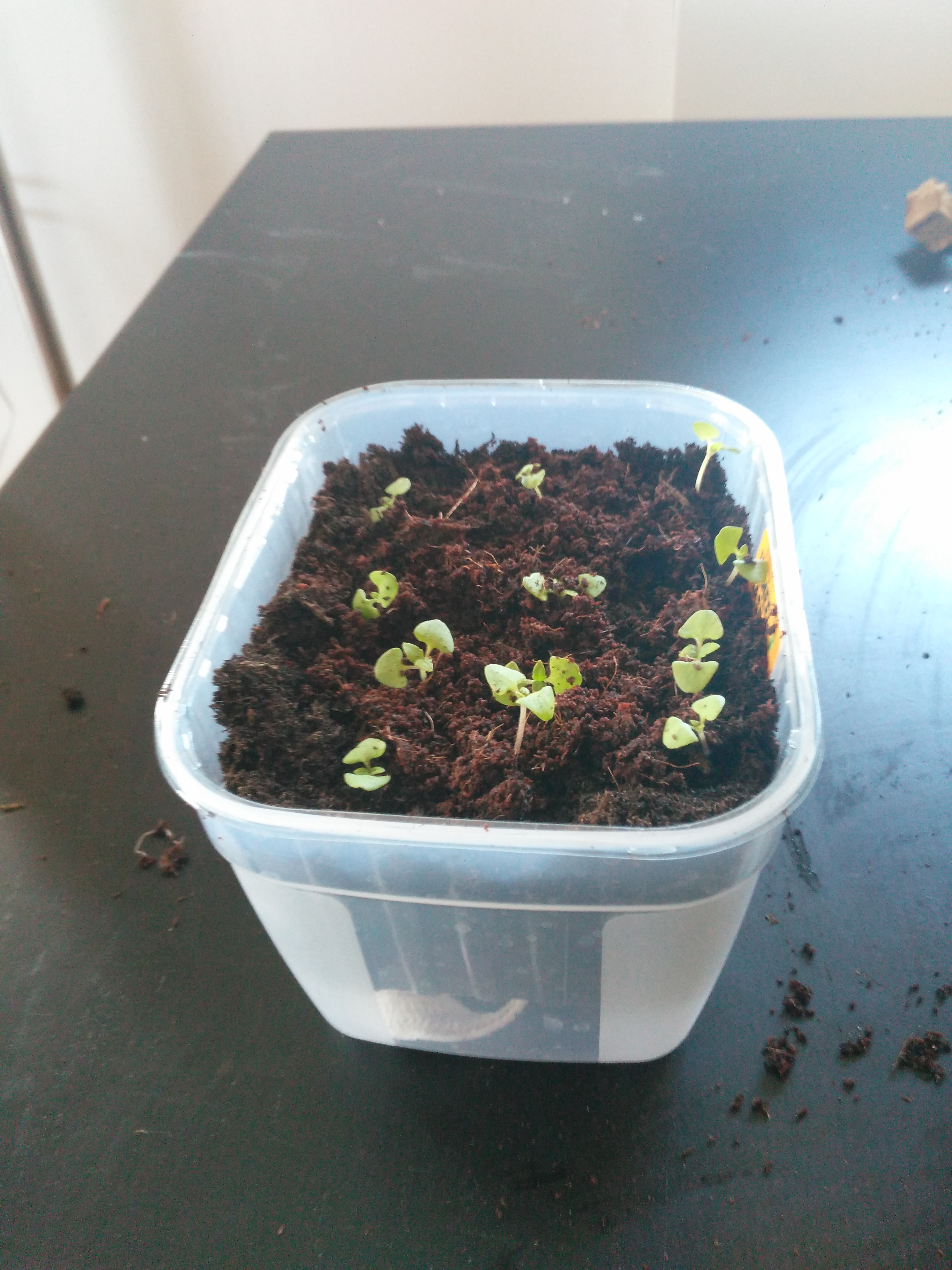
and then planted them.
Final remarks
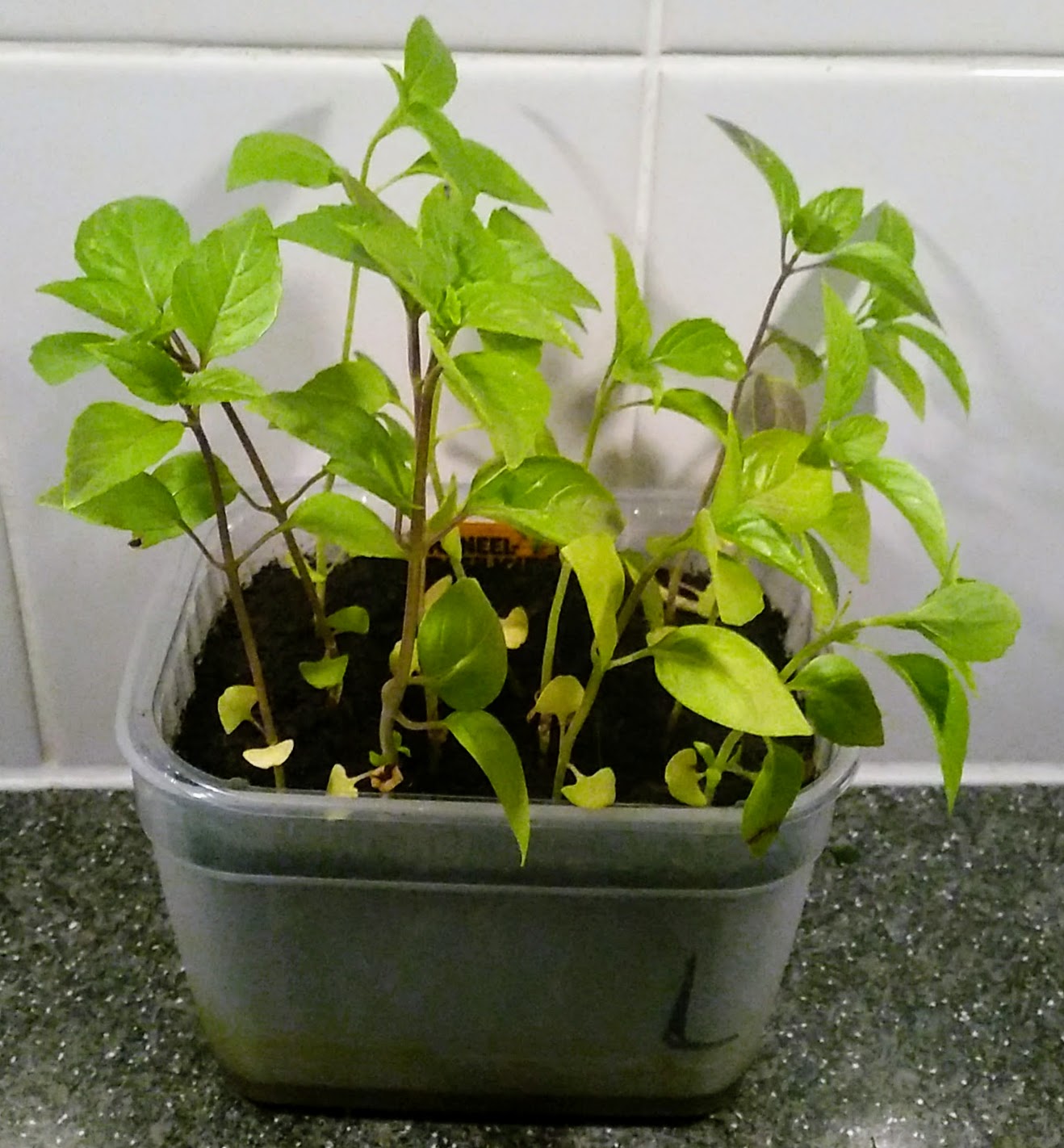
Here is how the cinnamon basil looks today. Pretty good! The passive watering system worked like a charm in most cases. After a bit more than a month, most of my little plants are doing quite well. In some cases it worked a bit too well… One of the plants is looking a bit over-watered, and it smells a bit funky. This leaves me wondering whether I over did it with the wicks. Perhaps just one or two is sufficient.
One more thing to consider when growing plants, whether indoor or outdoor is pest control. So far I’m doing fairly well as far as insects go, but in the past I’ve had a problem with flies in my house plants. Indoor plants are also more likely to get a fungal problem. As far as pests go, I also need to worry about the local fauna… This is Juno the plant murderer:
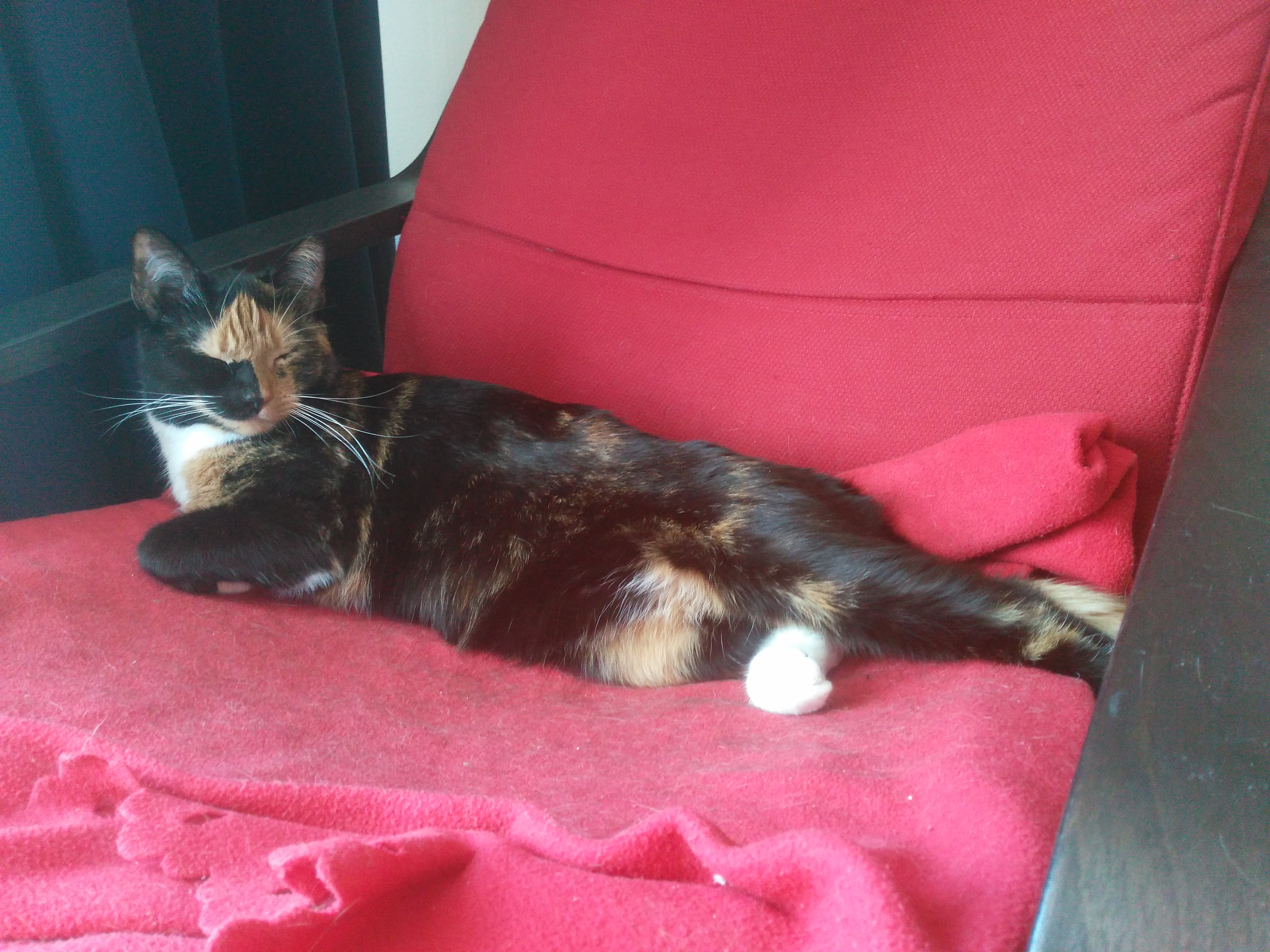
Don’t let her cool exterior fool you…. when you turn your back, she’ll eat up all of your crops.
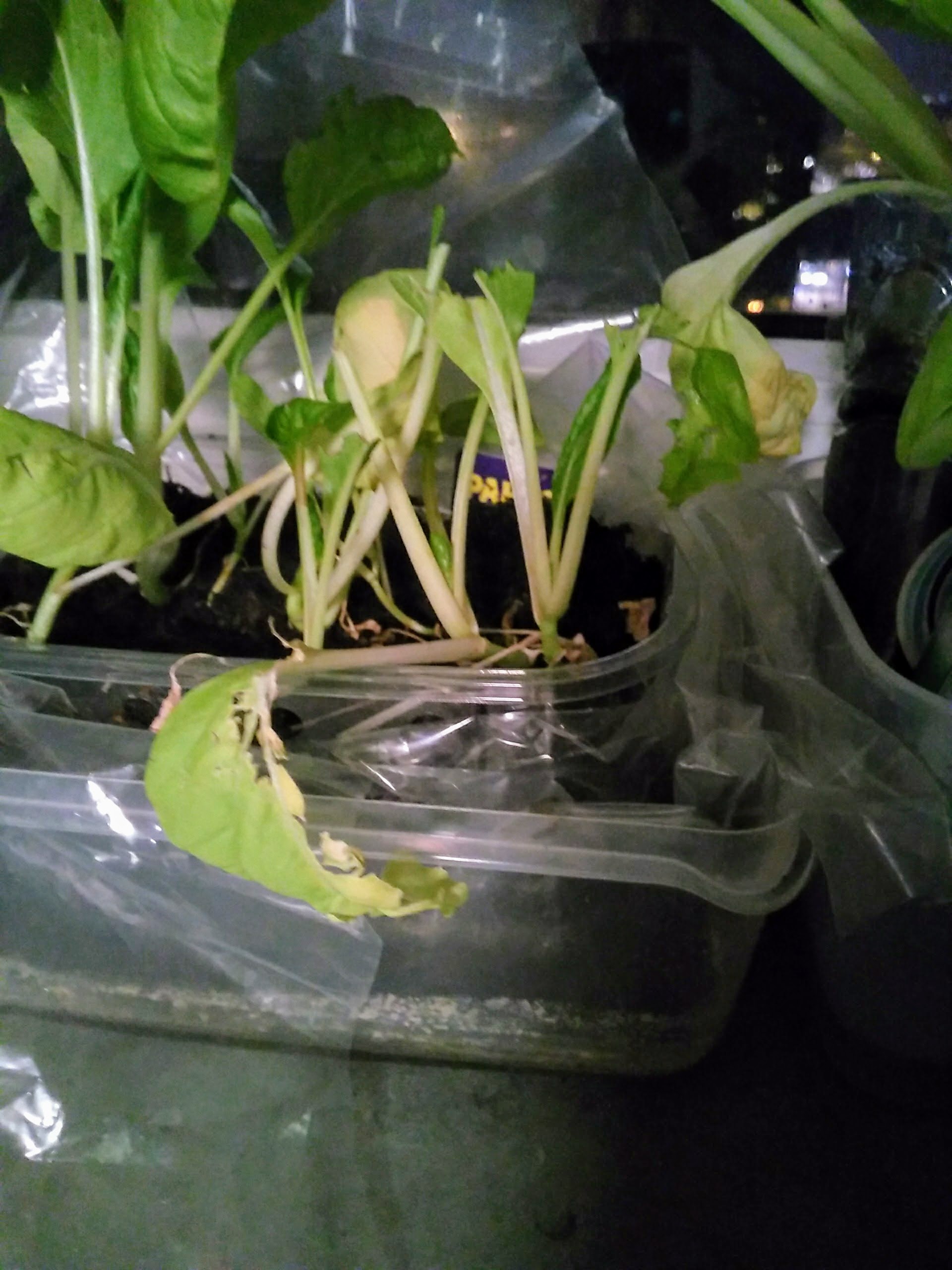
Well… at least someone enjoyed that bok choy.
Comments
-
Bablofil says:
July 16, 2017 at 9:29 pm
Thanks, great article.